In nine wacky seasons, the American Basketball Association (ABA) gave us run-and-gun offense, the second coming of the 3-point shot and plenty of entertainment, not to mention teenagers and really big hair, all wrapped in a red, white and blue ball.
If some of this sounds familiar, then it should. In many respects, the old ABA reflects what the modern NBA has become all these years later, a league of dunks and long-range bombs hoisted by a slew of mid-sized types and college-aged kids.
While the league wasn’t as skilled as the ABA cult likes to remember it — only two of its teams were close to NBA caliber in 1976, when the leagues merged — it wasn’t without star talent.
These are the best players, based on individual performance, contribution to team success, extended excellence and the eye test.
25. Bob Netolicky, Forward/Center
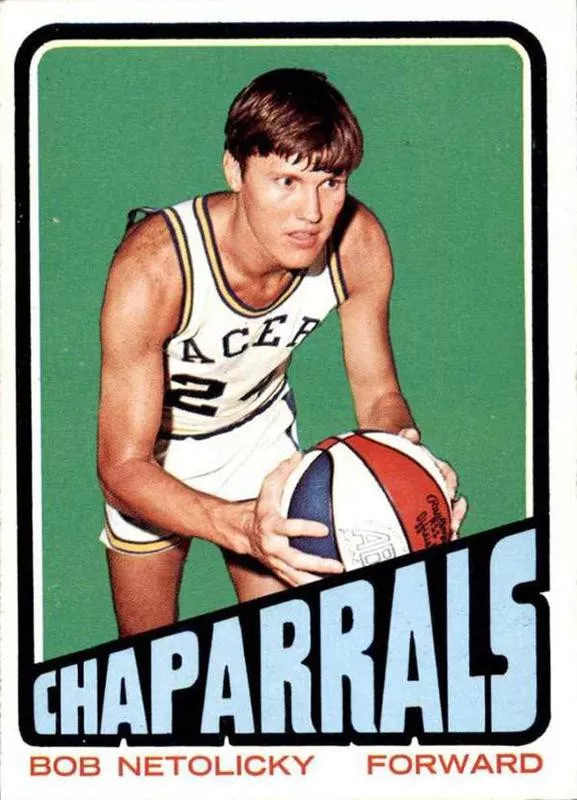
Bob Netolicky on a 1972 Topps card. Amazon
Career: 1967-76 (9 seasons)
Teams: Indiana Pacers, Dallas Chaparrals,
Regular-season stats/game: 16.0 points, 8.9 rebounds, 1.4 assists, 0.3* steals, 0.4* blocks
Win shares/48 minutes: .112
All-Star Games: 4 (1968, 1969, 1970, 1971)
League championships: 2 (1970, 1972)
Bottom line: He was Joe Namath in sneakers, except this party boy won more championships.
In his first three postseason appearances, Bob Netolicky put up an impressive 21.5/12.3/1.2 slash line.
Neto fun fact: He drove an orange Porsche among his fleet of vehicles and owned a popular Indy night spot.
Note: Incomplete statistics are marked with asterisks. Only those who played more than two seasons were eligible. Our apologies, Marvin Barnes, Billy Cunningham, Connie Hawkins, Spencer Haywood, Bobby Jones, Moses Malone, Charlie Scott, Willie Somerset and David Thompson.
24. Austin Robbins, Center/Forward
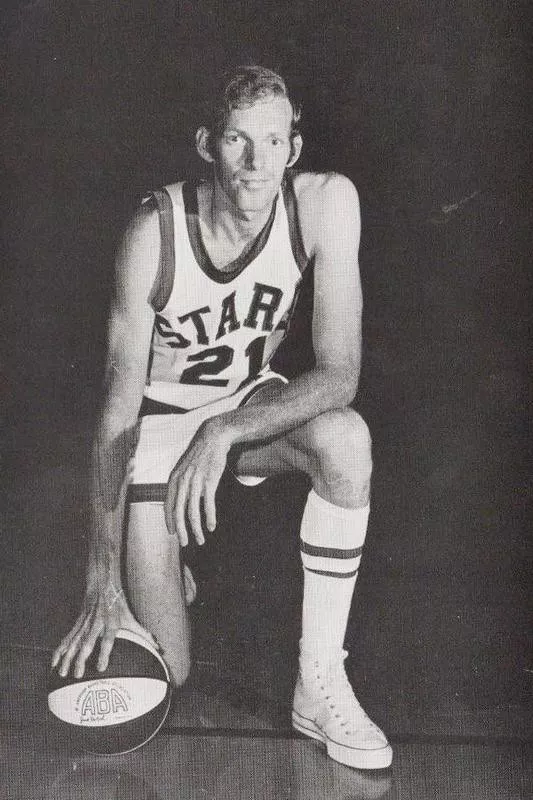
Austin Robbins played 586 games in the ABA. eBay
Career: 1967-75 (8 seasons)
Teams: New Orleans Buccaneers, Utah Stars, San Diego Conquistadors, Kentucky Colonels, Virginia Squires
Regular-season stats/game: 13.1 PTS, 10.5 REB, 1.7 AST, 0.5* STL, 0.5* BLK
Win shares/48 minutes: .130
All-Star Games: 3 (1968, 1969, 1971)
League championships: 1 (1971)
Bottom line: A relentless rebounder-defender who lived off loose change in the lane, “Red” was as quick to throw out a one-liner as he was an elbow.
If not for Austin Robbins, Utah would have one fewer pro hoops title, which is to say, none.
His Game 7 in the 1971 West Division finals was about as good as it gets — 25 points on 11-of-12 from the field and 3-of-3 at the free-throw line.
23. Darel Carrier, Guard
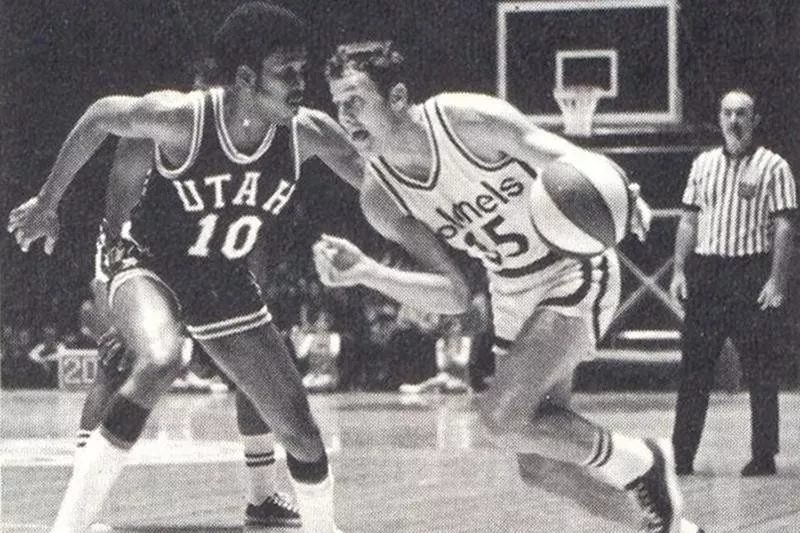
Darel Carrier scored 7,011 points in his ABA career. LamarMatic / YouTube
Career: 1967-72 (5 seasons)
Teams: Kentucky Colonels
Regular-season stats/game: 20.0 PTS, 3.4/ REB, 2.6 AST, N/A, N/A
Win shares/48 minutes: .118
All-Star Games: 3 (1968, 1969, 1970)
League championships: None
Bottom line: If not the best pure shooter in Red, White and Blue history, the Western Kentucky farm boy is on the short list. Darel Carrier’s career 38 percent was the league leader in 3-point field-goal percentage in three consecutive seasons.
The guy also had some swag to his game — he was believed to have been the first to step back into 3-point territory to launch a shot.
Would he have been perfect for the modern NBA or what?
22. Swen Nater, Center
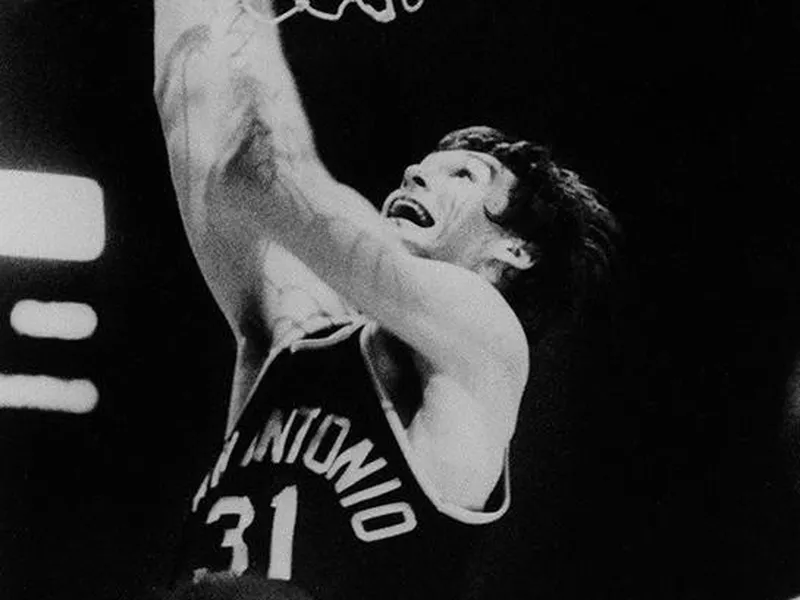
Swen Nater was ABA Rookie of the Year in 1974. AP Photo
Career: 1973-76 (3 seasons)
Teams: Virginia Squires, San Antonio Spurs, New York Nets
Regular-season stats/game: 13.0 PTS, 13.1 REB, 1.2 AST, 0.5 STL, 0.9 BLK
Win shares/48 minutes: .151
All-Star Games: 2 (1974, 1975)
League championships: None
Bottom line: Surprised? Well, ball don’t lie, and neither do the numbers in this case.
The big Dutchman is the all-time league leader in offensive and defensive rebound percentage. Swen Nater also dominated the 1974 All-Star Game like few players before or since — game highs of 29 points and 22 rebounds in 28 minutes. But he wasn’t selected Most Valuable Player in a 16-point loss.
Pretty good for the guy who caddied for UCLA Big Man on Campus Bill Walton for two years, huh?
21. Larry Kenon, Forward
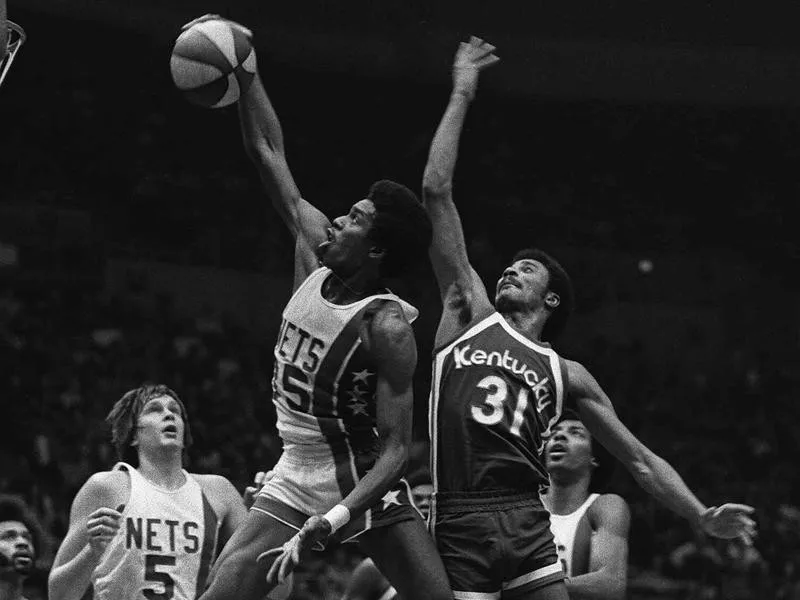
New York Nets forward Larry Kenon has his hands full of basketball as he comes down with a rebound against the Kentucky Colonels in 1975. AP Photo
Career: 1973-76 (3 seasons)
Teams: New York Nets, San Antonio Spurs
Regular-season stats/game: 17.7 PTS, 11.1/ REB, 1.5 AST, 1.1 STL, 0.4 BLK
Win shares/48 minutes: .117
All-Star Games: 3 (1974, 1975, 1976)
League championships: 1 (1974)
Bottom line: This 6-foot-7 package of ups and quickness was part of perhaps the most dominant front line and team in league history.
That would be the 1974 Nets, of course, who won 22 of their final 25 games en route to their first league title.
Mr. K was among the few ABA survivors who went on to a productive NBA career.
20. Brian Taylor, Guard
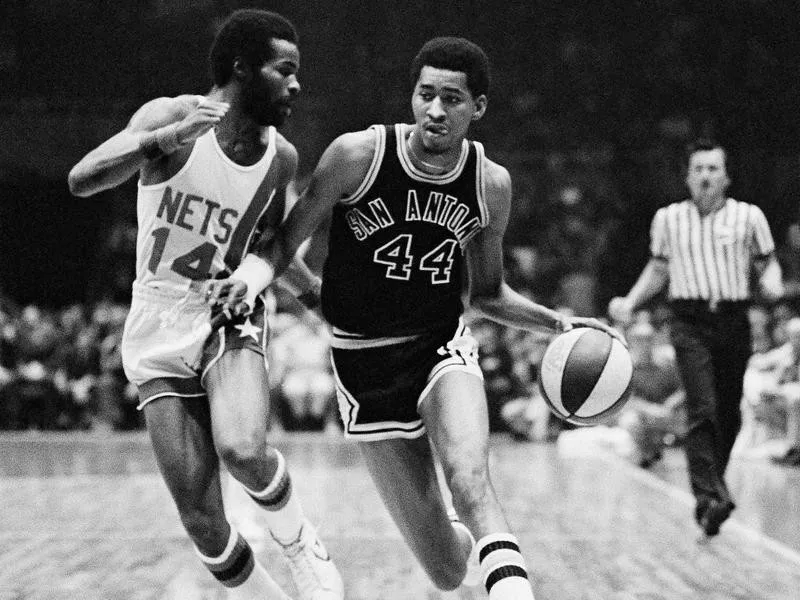
Brian Taylor, left, defends San Antonio Spur George Gervin in 1976. Lennox McLendon / AP Photo
Career: 1972-76 (4 seasons)
Teams: New York Nets
Regular-season stats/game: 14.0 PTS, 3.0 REB, 3.7 AST, 2.4 STL, 0.3 BLK
Win shares/48 minutes: .119
All-Star Games: 2 (1975-76)
League championships: 2 (1974, 1976)
Bottom line: While teammates John Williamson and Julius Erving hogged the headlines, the Princeton product served as the glue guy, an efficient ball distributer-shot-maker at one end, a two-time All-Defense team selection at the other.
Brian Taylor scored 24 points in the 1976 championship clincher, the final game in ABA history.
19. Ron Boone, Guard
Career: 1968-76 (8 seasons)
Teams: Dallas/Texas Chapparals, Utah Stars, Spirits of St. Louis
Regular-season stats/game: 18.4 PTS, 5.0 REB, 3.9 AST, 1.6* STL, 0.3* BLK
Win shares/48 minutes: .115
All-Star Games: 4 (1971, 1974, 1975, 1976)
League championships: 1 (1971)
Bottom line: The 6-foot-2, 200-pounder could bully guards, out-quick small forwards and was cocky (or was it crazy?) enough to challenge bigs, 7-foot-2 Artis Gilmore among them.
Ron Boone’s midseason acquisition (along with guard Glen Combs) was the final piece to the Utah Stars’ 1971 championship puzzle.
“Chief” fun fact: He had memorable scraps with tough guys John Brisker and Cincy Powell, to name a few.
18. Billy Paultz, Center
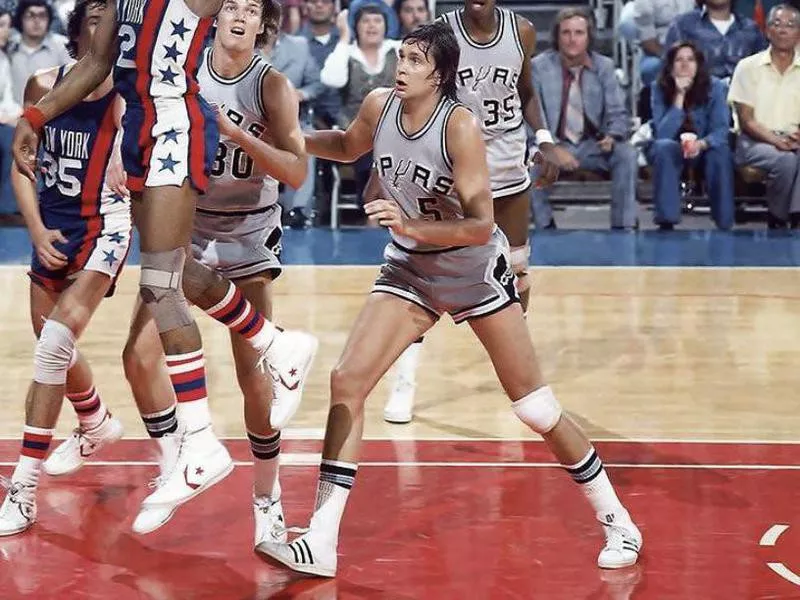
Billy Paultz played more games in the NBA (637) than the ABA (487). @SportsDaysPast / Twitter
Career: 1970-76 (6 seasons)
Teams: New York Nets, San Antonio Spurs
Regular-season stats/game: 15.7 PTS, 11.1 REB, 2.4 AST, 0.8 STL, 2.3 BLK
Win shares/48 minutes: .122
All-Star Games: 3 (1973, 1975, 1976)
League championships: 1 (1974)
Bottom line: The 6-foot-11, 245-pounder possessed one of the flattest outside shots ever, but darn if it didn’t go in a lot of the time. Defenses had no choice but to guard him away from the bucket, which loosened the inside for others.
Billy Paultz owns the unofficial league record for most lead-footed rebounds and blocked shots in league history.
“Whopper” fun fact: He was part owner of The Salty Dog restaurant near Nassau Coliseum in Uniondale, New York, and was known to sample a few in his career.
17. Warren Jabali (Armstrong), Guard
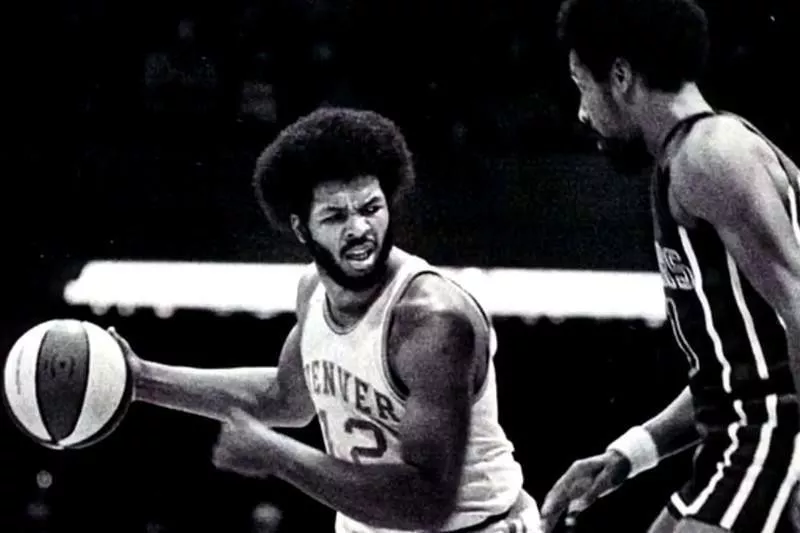
Warren Jabali played 447 games in the ABA. LamarMatic / YouTube
Career: 1968-75 (7 seasons)
Teams: Oakland Oaks/Washington Capitols, Indiana Pacers, The Floridians, Denver Rockets, San Diego Conquistadors
Regular-season stats/game: 17.1 PTS, 6.7 REB, 5.3 AST, 2.0* STL, 0.3* BLK
Win shares/48 minutes: .110
All-Star Games: 4 (1970, 1972, 1973, 1974)
League championships: 1 (1968)
Bottom line: Before back and knee problems, the Wichita State product was one of the most electric athletes the league would ever know, a multi-talented 6-foot-2 guard who could play like a 6-foot-7 forward when the situation called for it.
He was the only non-center to be selected playoffs (1968) and All-Star Game (1973) Most Valuable Player.
16. Louie Dampier, Guard
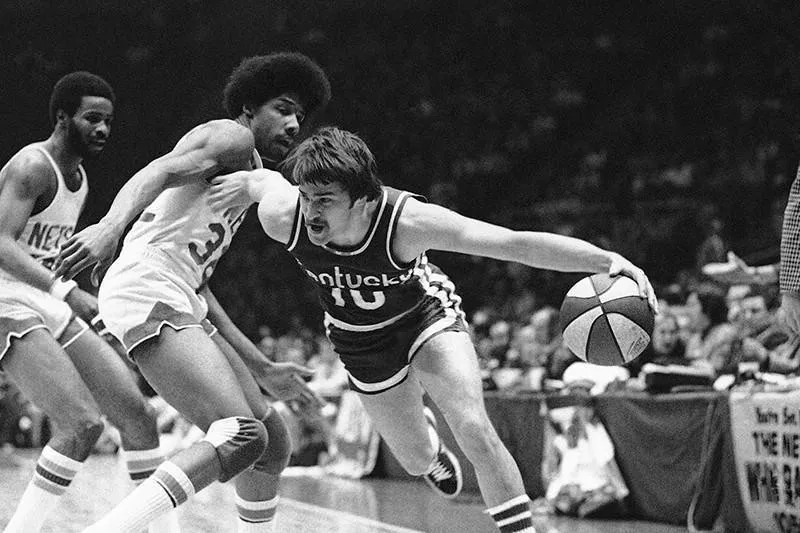
Kentucky Colonels guard Louie Dampier, right, pours it on as he drives around the New York Nets defense during an ABA playoff game in 1974. Richard Drew / AP Photo
Career: 1967-76 (9 seasons)
Teams: Kentucky Colonels
Regular-season stats/game: 18.9 PTS, 3.1 REB, 5.6 AST, 0.9* STL, 0.5* BLK
Win shares/48 minutes: .116
All-Star Games: 7 (1968, 1969, 1970, 1972, 1973, 1974, 1975)
League championships: 1 (1975)
Bottom line: In a league that had more moving parts than an hourglass, this all-time points and assists leader was strangely out of place.
The Kentucky product was the only player to spend all nine ABA seasons with the same team. And play home games in the very arena where he played college ball.
While known primarily for his offense, Louie Dampier brought it at the other end as well, as evidenced by the 46 blocked shots in his final season.
15. James Silas, Guard
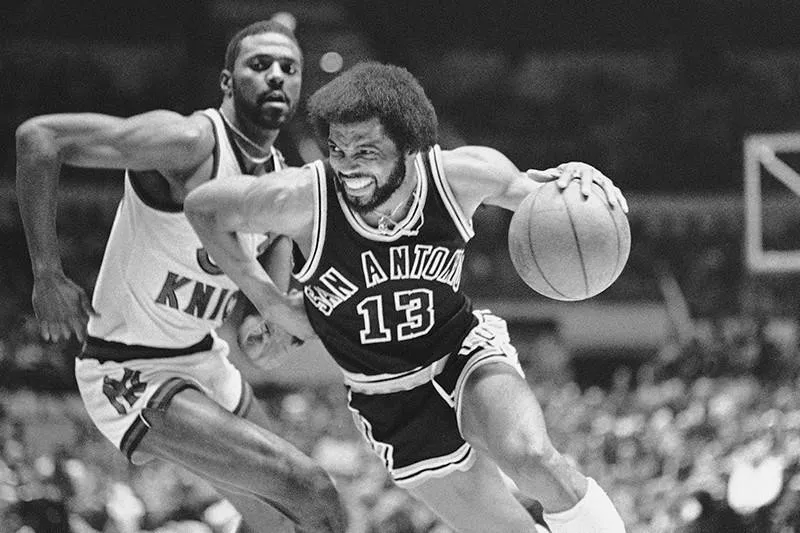
James Silas played four seasons in the ABA before playing six seasons in the NBA. Richard Drew / AP Photo
Career: 1972-76 (4 seasons)
Teams: Dallas Chaparrals/San Antonio Spurs
Regular-season stats/game: 18.2 PTS, 4.0 REB, 4.3 AST, 1.4 STL, 0.2 BLK
Win shares/48 minutes: .157
All-Star Games: 2 (1975, 1976)
League championships: None
Bottom line: For years, the Stephen F. Austin State flash was one of the best players few ever saw perform in the flesh. And if you didn’t see him in the fourth quarter especially, you often missed a lot.
That’s when James Silas routinely took over games.
“Captain Late” fun fact: He was originally known as “The Late Mr. Silas,” a nickname that he didn’t much care for before it was shortened.
14. Larry Jones, Guard
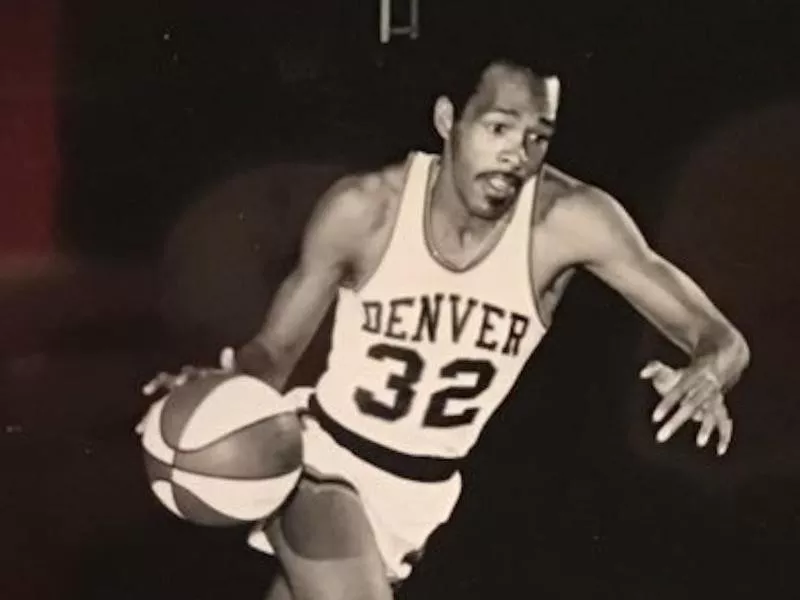
Larry Jones was the first ABA player to score 5,000 points. @ColonelCards / Twitter
Career: 1967-73 (6 seasons)
Teams: Denver Rockets, The Floridians, Utah Stars, Dallas Chaparrals
Regular-season stats/game: 21.2 PTS, 5.4 REB, 3.9 AST, N/A/, N/A
Win shares/48 minutes: .155
All-Star Games: 4 (1968, 1969, 1970, 1971)
League championships: None
Bottom line: The Philadelphia 76ers’ cast-off was the first big shooter in the backcourt in the early years of the ABA.
His 28.5/6.6/3.4 slash line (and .465 field-goal percentage) in the 1968-69 season set the bar at the position. Oh, and Larry Jones dropped 30-or-more points in a league-record 23 consecutive games.
He also was the first player to score 30 points in an All-Star Game (1970), only to have Nuggets rookie teammate Spencer Hayward be selected Most Valuable Player.
13. Willie Wise, Forward
Career: 1969-75 (6 seasons)
Teams: Los Angeles/Utah Stars, Virginia Squires
Regular-season stats/game: 19.2 PTS 9.1 REB, 3.1 AST, 1.4* STL, 0.4* BLK
Win shares/48 minutes: .130
All-Star Games: 3 (1972, 1973, 1974)
League championships: 1 (1971)
Bottom line: Even at 6-foot-5, the undrafted forward was among the best two-way players in league history, especially when the stakes were highest.
He averaged 21.8 points in four Game 7s, three of them victories.
“Wondrous Willie” fun fact: The Drake product was a baseball grounds crew member in Des Moines, Iowa, when the Stars offered a tryout.
12. Donnie Freeman, Guard
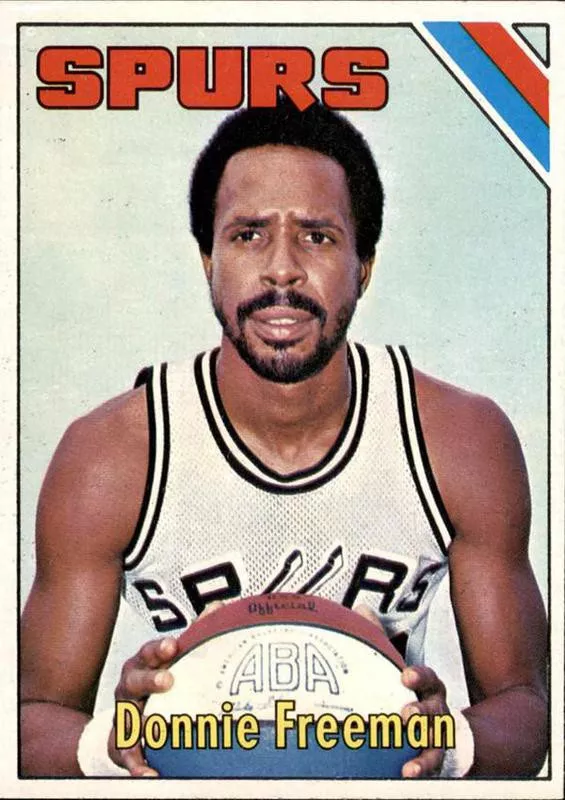
Donnie Freeman on a 1975 Topps card. Amazon
Career: 1967-75 (7 seasons)
Teams: Minnesota Muskies, Miami Floridians, Utah Stars, Texas/Dallas Chaparrals, Indiana Pacers
Regular-season stats/game: 19.8 PTS, 3.6 REB, 3.6 AST, 0.8* STL, 0.3* BLK
Win shares/48 minutes: .136
All-Star Games: 5 (1968, 1969, 1970, 1971, 1972)
League championships: 1 (1973)
Bottom line: Donnie Freeman combined 6-foot-3 size with unusual savvy to abuse backcourt defenders for years. His midrange game featured an array of leaners, turnarounds and off-balance shots that resulted in an inordinate number of of two-shot fouls and and-ones.
He was an All-Star Game starter four of his first five seasons and a reserve in the other one.
Only six players scored more points in league history.
11. Mack Calvin, Guard
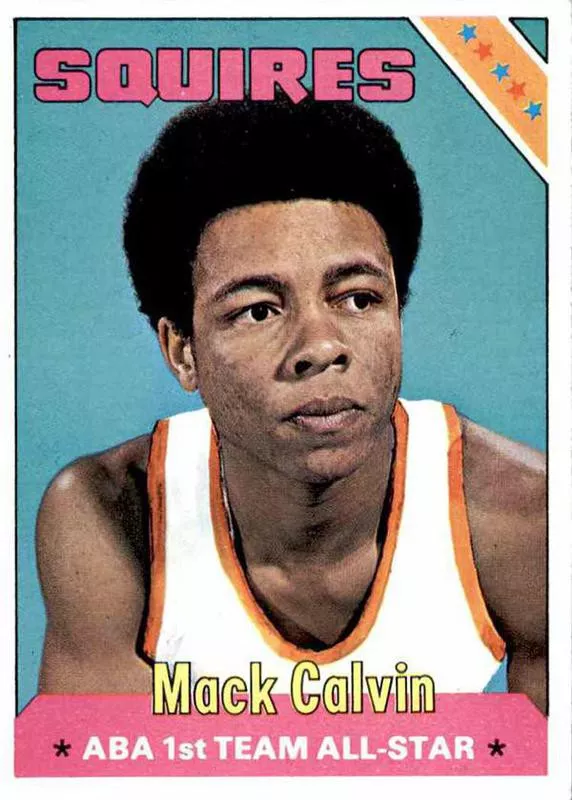
Mack Calvin on a 1976-76 Topps card. Amazon
Career: 1969-76 (7 seasons)
Teams: Indiana Virginia Squires, Utah Stars
Regular-season stats/game: 19.9 PTS, 3.1 REB, 5.8 AST, 1.7* STL, 0.1* BLK
Win shares/48 minutes: .143
All-Star Games: 5 (1971, 1972, 1973, 1974, 1975)
League championships: None
Bottom line: The 6-foot point guard was quicker than a waterbug and tougher than a fast-food steak. The USC product had to be all that to survive the South Central Los Angeles projects.
There was no better quarterback on the fast break, no surer hand on the pull-up jumper.
He ranks second in assists and eighth in points in ABA history.
10. George Gervin, Forward
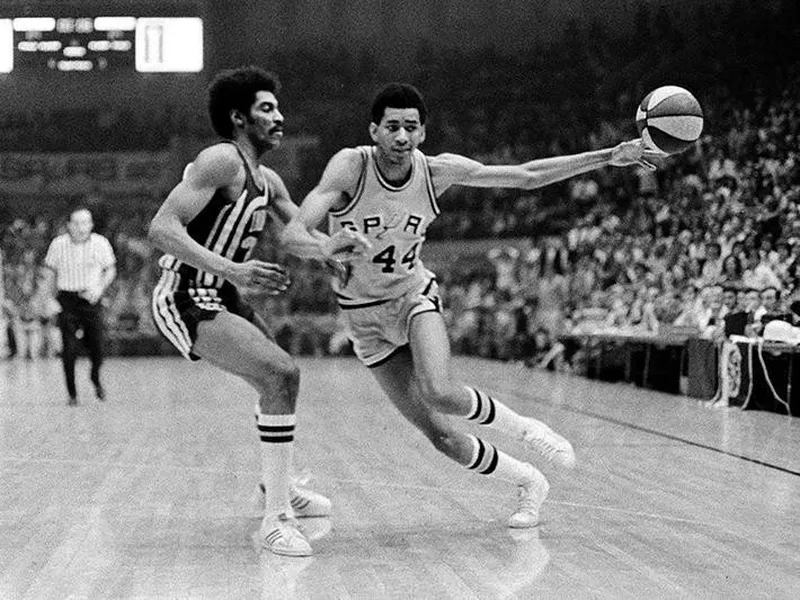
George Gervin during an ABA game against the Indiana Pacers in 1974. AP Photo
Career: 1972-76 (4 seasons)
Teams: Virginia Squires, San Antonio Spurs
Regular-season stats/game: 23.4 PTS, 7.9 REB, 2.3 AST, 1.5* STL, 1.6* BLK
Win shares/48 minutes: .147
All-Star Games: 3 (1974, 1975, 1976)
League championships: None
Bottom line: No sooner did Squires scout Johnny Kerr discover the 20-year-old in the CBA than the kid scored 20 points in his Red, White and Blue debut.
From finger rolls to bank shots and midrange jumpers, no one had more tricks in his bag than George Gervin.
“The Iceman’ fun fact: He and 23-year-old Julius Erving were teammates for one playoff series in his rookie season, when the Kentucky Colonels schooled the Squires in five games.
9. Zelmo Beaty, Center-Forward
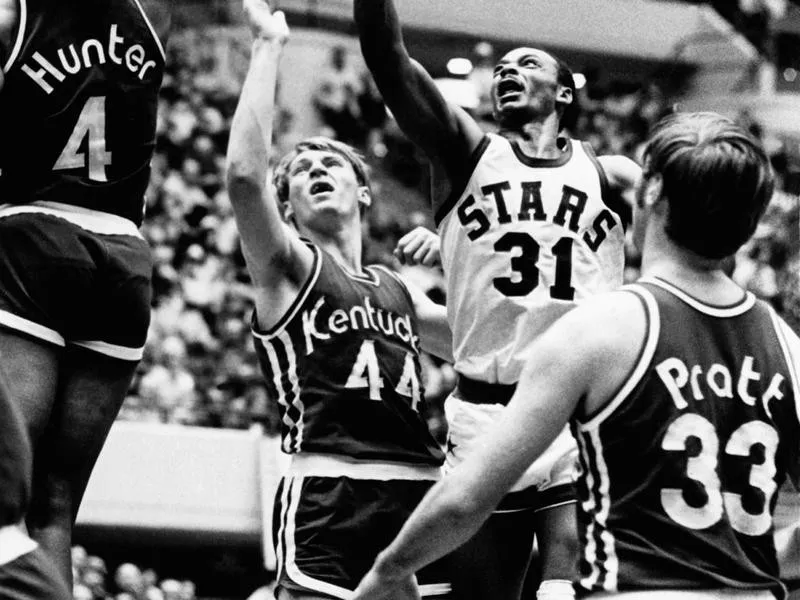
Zelmo Beaty played 319 games in the ABA. @NBAHistory / Twitter
Career: 1971-74 (4 seasons)
Teams: Utah Stars
Regular-season stats/game: 19.1 PTS, 11.6 REB, 1.6 AST, 0.8* STL, 0.9 BLK
Win shares/48 minutes: .203
All-Star Games: 3 (1971, 1972, 1973)
League championships: 1 (1971)
Bottom line: After Big Z made the jump at 31 years old of age, he accomplished more in the next three seasons than in the previous seven put together. The underrated vet was too skilled, too slick for so many inexperienced centers to make it a fair fight.
Zelmo Beaty also was the first player to reach the 60-point mark in league history and a pivotal player in Utah’s first pro sports championship.
8. Roger Brown, Forward
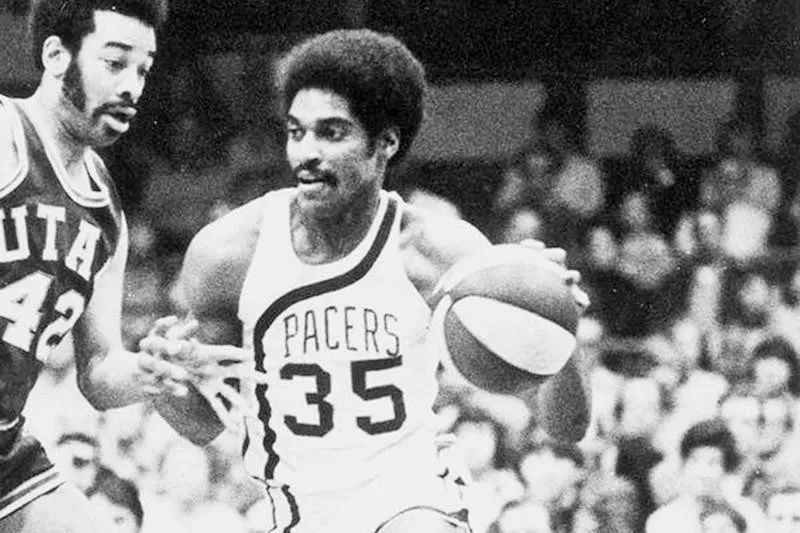
Roger Brown was nicknamed “The Rajah.” @Pacers / Twitter
Career: 1967-75 (8 seasons)
Teams: Indiana Pacers, Memphis Sounds, Utah Stars
Regular-season stats/game: 17.4 PTS, 6.2 REB, 3.8 AST, 0.7* STL, 0.6* BLK
Win shares/48 minutes: .146
All-Star Games: 4 (1968, 1970, 1971, 1972)
League championships: 3 (1970, 1972, 1973)
Bottom line: The New York playground legend was one of the great shake-and-bakers of his generation.
The 1970 playoffs MVP turned it on and off like a beer tap, and in the championship round that year, Roger Brown was on full blast with 53, 39 and 45 points in the final three games.
“The Rajah” fun fact: The NBA barred him for his association with fixers. He declined to play there after the ban was lifted out of loyalty to his old team and league.
7. George McGinnis, Forward
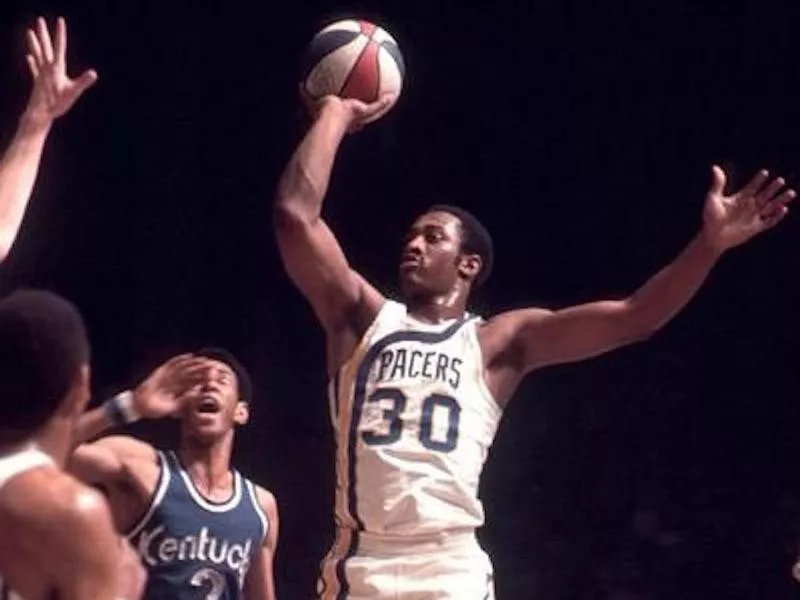
George McGinnis was inducted into the Basketball Hall of Fame in 2017. @Super70sSports / Twitter
Career: 1971-75 (4 seasons)
Teams: Indiana Pacers
Regular-season stats/game: 25.2 PTS, 12.9/ REB, 3.5 AST, 2.2* STL, 0.6* BLK
Win shares/48 minutes: .154
All-Star Games: 3 (1973, 1974, 1975)
League championships: 2 (1972, 1973)
Bottom line: As physical freaks went, the 6-foot-8, 235-pounder broke the mold long before LeBron James was even a thought. Big Mac played the game like the tight end that he was in high school, where many talent scouts believed he had NFL potential.
It wasn’t unusual for him to outmuscle an opponent for a rebound, dribble the length of the court then throw a behind-the-back pass to a teammate for a layup. Or out of bounds for a turnover.
The 1973 playoffs Most Valuable Player produced a 20.5/14.5/2.2 slash line in back-to-back league championship series.
6. Jimmy Jones, Guard
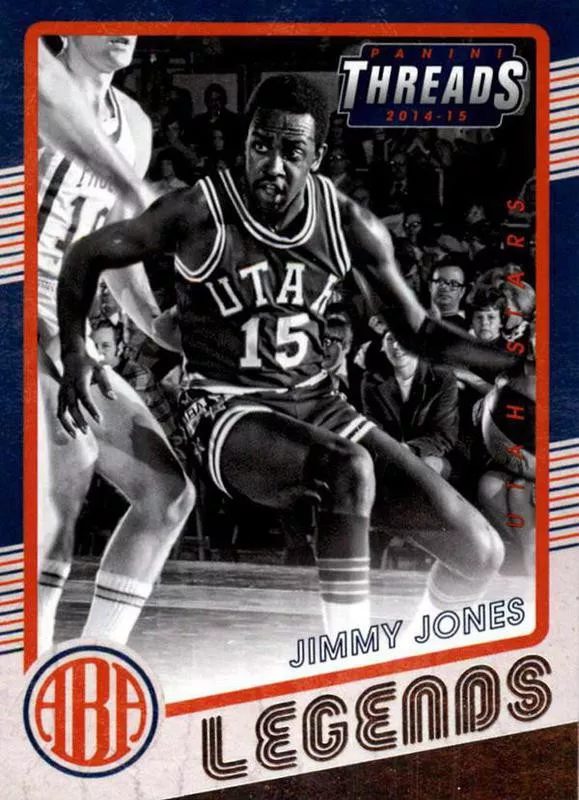
Jimmy Jones played 546 games in the ABA. eBay
Career: 1967-74 (7 seasons)
Teams: New Orleans Buccaneers/Memphis Pros, Utah Stars
Regular-season stats/game: 19.2 PTS, 4.9 REB, 5.1 AST, 1.9* STL, 0.4* BLK
Win shares/48 minutes: .167
All-Star Games: 6 (1968, 1969, 1970, 1971, 1973, 1974)
League championships: None
Bottom line: The six-time All-Star was the best ABAer never to win the big one, the rare combo guard who could shoot, pass, rebound and defend.
His .510 field-goal percentage ranks No. 1 at the position in league history.
Fun fact: Jimmy Jones chose the Buccaneers over the NBA Baltimore Bullets (who drafted Earl Monroe one round ahead of him) after they promised to run their offense around him.
5. Dan Issel, Forward-Center
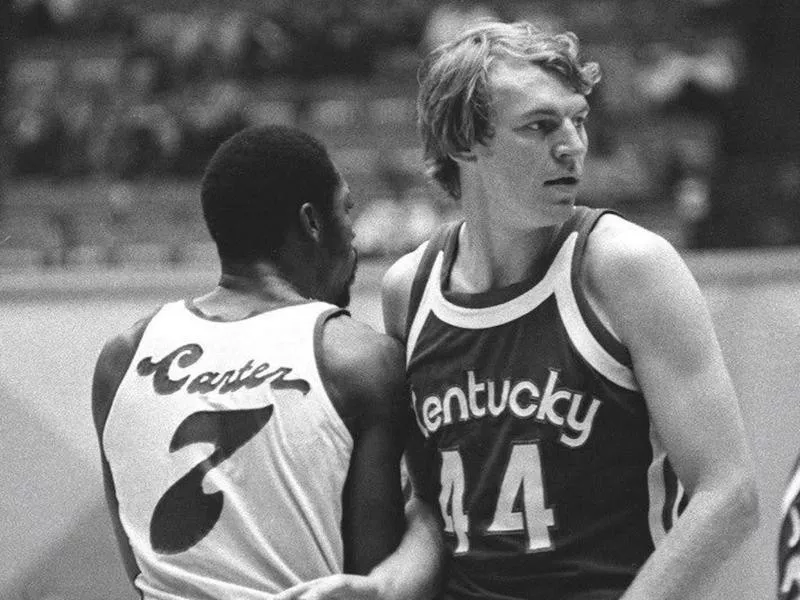
Dan Issel played 500 games in the ABA. @Super70sSports / Twitter
Career: 1970-76 (6 seasons)
Teams: Kentucky Colonels, Denver Nuggets
Regular-season stats/game: 23.8 PTS, 10.8 REB, 1.7 AST, 0.9* STL, 0.7* BLK
Win shares/48 minutes: .171
All-Star Games: 6 (1971, 1972, 1973, 1974, 1975, 1976)
League championships: 1 (1975)
Bottom line: Was there a more apt nickname than “The Horse” for a working stiff who averaged 23 points and 10 rebounds per game in all but one season and raised thoroughbreds in this spare time?
Not long after the Kentucky Colonels won their only league title, Dan Issel was traded to Denver in a salary dump.
There, he teamed with Bobby Jones and David Thompson on a monster front line that remained intact after the ABA-NBA merger.
4. Mel Daniels, Center
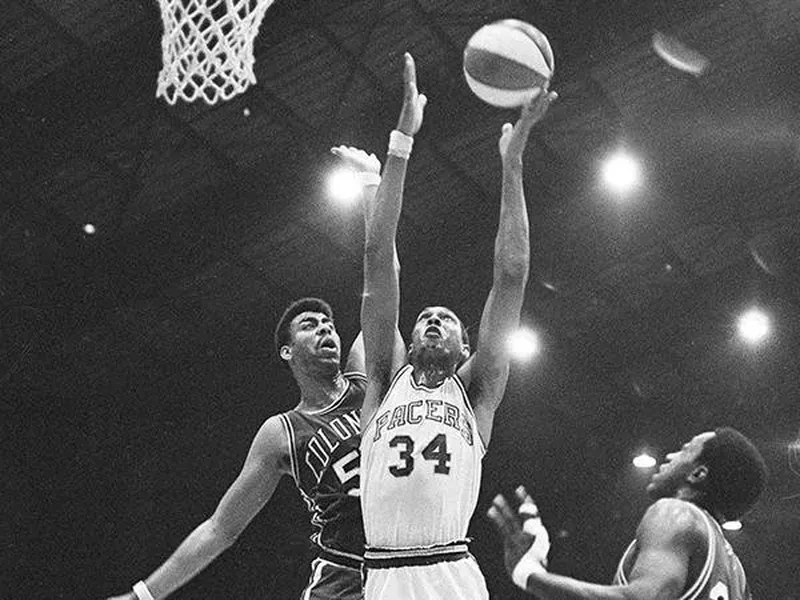
Mel Daniels skies for a rebound against the Kentucky Colonels in 1969. AP Photo
Career: 1967-75 (8 seasons)
Teams: Minnesota Muskies, Indiana Pacers
Regular-season stats/game: 18.7PTS, 15.1 REB, 1.8 AST, 0.6* STL, 1.5* BLK
Win shares/48 minutes: .139
All-Star Games: 7 (1968, 1969, 1970, 1971, 1972, 1973, 1974)
League championships: 3 (1970, 1972, 1973)
Bottom line: This rebounding fool was part of the ABA for all except its final season and won three major awards along the way — Most Valuable Player (twice), All-Star Game MVP and Rookie of the Year.
Mel Daniels is among the top 10 in virtually every major statistical category on the all-time list.
“Big Mel” fun fact: The Pacers acquired him for two stiffs and a few thousand bucks in what amounted to the greatest Brinks job in league history.
3. Artis Gilmore, Center
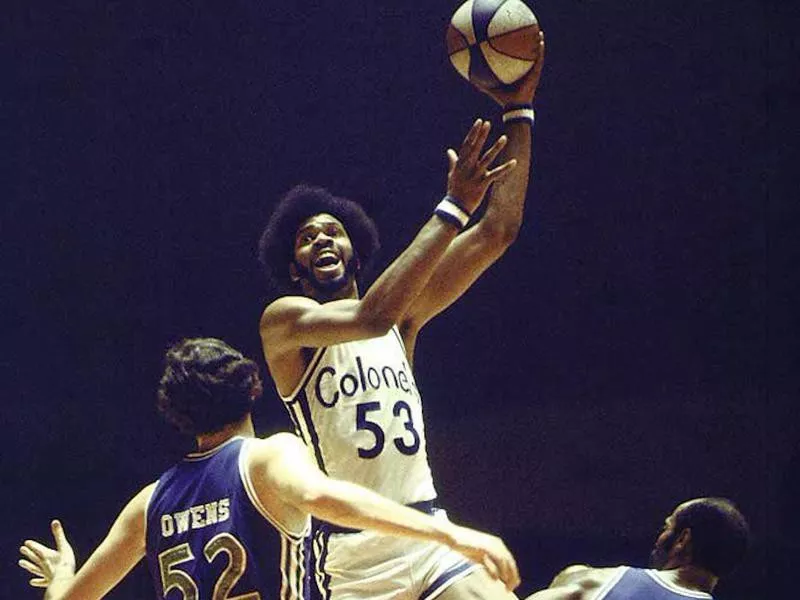
Artis Gilmore scored 24,941 points in his pro basketball career, including 9,362 in the ABA. @missouri_in / Twitter
Career: 1971-76 (5 seasons)
Teams: Kentucky Colonels
Regular-season stats/game: 22.3 PTS, 17.1 REB, 3.0 AST, 0.7* STL, 3.4 BLK
Win shares/48 minutes: .226
All-Star Games: 5 (1972, 1973, 1974, 1975, 1976)
League championships: 1 (1975)
Bottom line: “The Big A” was the ABA version of Wilt Chamberlain with one notable exception. This gentle giant had no Bill Russell to push back.
Artis Gilmore ranks as the all-time ABA leader in minutes played, rebounds and blocked shots per game, but in a league of so few established bigs, more than one critic believes that he should have done even more.
It wasn’t until his second-to-last season that he expanded his game, punched out enforcer Maurice Lucas in a rare fit of emotion, and his team finally won it all.
2. Rick Barry, Forward
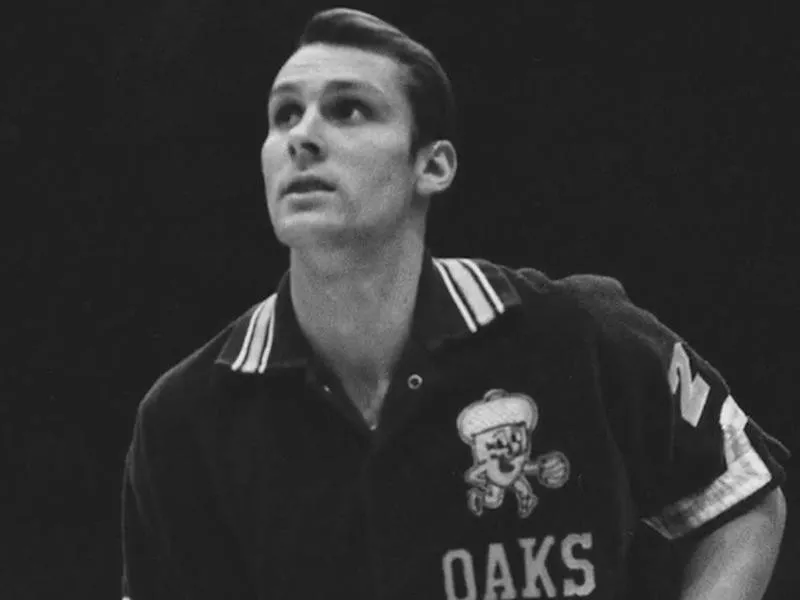
Rick Barry led the Oakland Oaks to a championship in his first ABA season. @SportsonEarth / Twitter
Career: 1968-72 (4 seasons)
Teams: Oakland Oaks/Washington Capitols, New York Nets
Regular-season stats/game: 30.5 PTS, 7.5 REB, 4.1 AST, N/A, N/A
Win shares/48 minutes: .183
All-Star Games: 4 (1969, 1970, 1971, 1972)
League championships: 1 (1969)
Bottom line: Rick Barry was the greatest scorer in ABA history — his 30.5 points-per-game mark suggests as much — but that doesn’t begin to tell his real impact.
As the first superstar to sign with the rival league, he gave it some desperately needed credibility. Yet somehow, he wasn’t a unanimous choice for the All-Time ABA Team chosen at its 30-year reunion.
Really? How soon we forget that, if not for him, the league would have been lucky to last more than a season or two.
1. Julius Erving, Forward
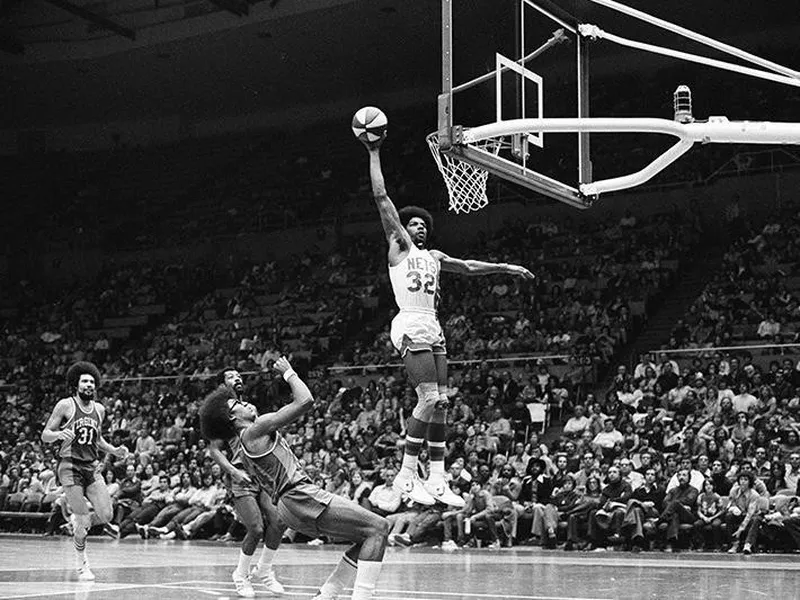
Julius Erving, known as “Doctor J,” dunks during an ABA game in 1975. Harry Harris / AP Photo
Career: 1971-76 (5 seasons)
Teams: Virginia Squires, New York Nets
Regular-season stats/game: 28.7 PTS,12.1 REB, 4.8 AST, 2.4* STL, 2.0* BLK
Win shares/48 minutes: .217
All-Star Games: 5 (1972, 1973, 1974, 1975, 1976)
League championships: 2 (1974, 1976)
Bottom line: Part of us wishes that Dr. J had spent his athletic prime against the far better NBA competition on a national stage.
The other part thinks we’re fortunate that the three-time Most Valuable Player played in the ABA, where “The Greatest Show Above Earth” could do so many wondrous things even if so few witnessed much (if any) of them.
“Doctor” fun fact: Squires reserve Willie Sojourner was behind the nickname, which the team owner called his greatest accomplishment of the season.